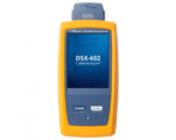Patch Cord Testing – Coiled or Uncoiled
We often receive questions about the proper methods for testing Patch Cords. The applicable standards provide guidance on the limits and the required patch cord jacks required to run the tests.
Another question we would like to comment on is whether the patch cords should be coiled or uncoiled while being tested.
Coiling can influence the performance of all cables, and hence patch cords. The exact amount that a result can change between coiled and uncoiled samples depends on several factors including the length, number of loops in the coil, separation of the coil loops, and of course cable construction.
Due to the variables involved it is not possible for FNET to predict the exact differences for any given cord. In some cases, the differences can be negligible, but it is often true that coiled results can be very different from uncoiled. The impact of coiling may be most apparent in long coiled UTP cords which can demonstrate large changes in crosstalk compared to uncoiled, this affects both shielded and unshielded cables.
Typically Fluke Networks recommends that any sample is tested in a configuration that represents how the product is to be installed and operated, however with production testing of patch cords we recognize that this is not often practical, hence we recommend that a patch cord manufacturer perform trials of cords for a given construction and packaging to understand those particular differences between coiled and uncoiled cords and gain confidence regarding the margin required to ensure their customer support.








